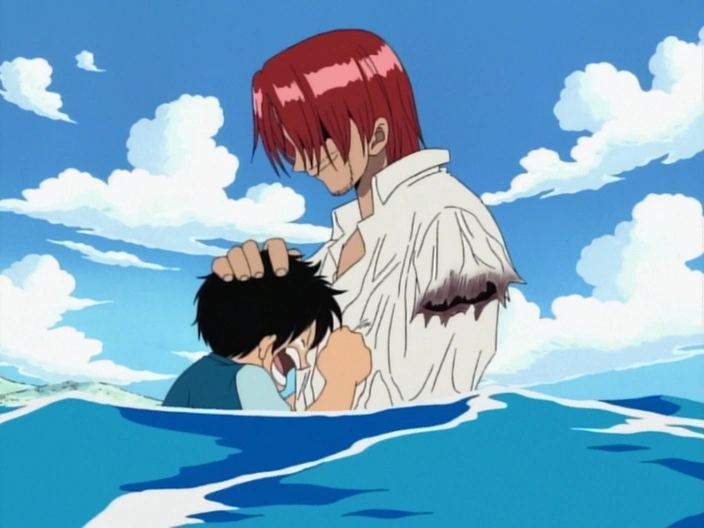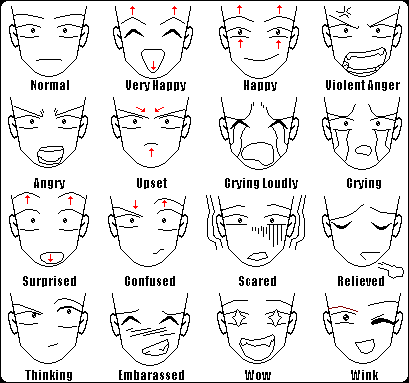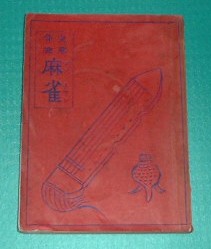Lamarre, Thomas. "From Animation to Anime : Drawing Movements and Moving Drawings." Japan Forum 14.2 (2002): 329-67. Web. 10 Dec. 2014.
Odell, Colin, and Michelle Le Blanc. Anime. Harpenden: Kamera, 2013. Print.
Koyama-Richard, Brigitte. Japanese Animation from Painted Scrolls to Pokémon. Paris: Flammarion, 2010. Print.
background from * http://www.superbwallpapers.com/anime/my-neighbor-totoro-27508/
Monday, December 15, 2014
Why Anime Captivates People, Including Me
The allure of anime is that while it is meant for children, it also appeals to adults. This is very common in Japan because Japan is very tolerant of its childish cultures and childish values according to Le Blanc. So while the more dark and dense anime may appeal to some adults, there are also the more fun and emotional anime’s that appeals to the inner children of other adults. Now, those animes are crafted from the genius of the Japanese, who are very much proficient in presenting the narrative through childhood perceptions, which renders the feelings of a child with the use of detail. It’s that sweet and naive perspective that captivates the general population and puts them in the shoes of the child. It’s also captivating because everything is viewed from a more simple and innocent viewpoint which is very much pleasant to engage in. Another reason is because many baby boomers continued to read their favorite mangas into adulthood and the nostalgia factor of TV animes that are based off of mangas can prove to be very entertaining to these baby boomers.


(manga) (anime)
* http://img4.wikia.nocookie.net/__cb20121230003953/onepiece/images/a/ab/ShanksArm.png
* http://img2.wikia.nocookie.net/__cb20130208234503/onepiece/images/c/c8/Shank%27s_Arm_Original_Anime.png
Another important aspect of anime is its attention to symbolism, emotion, and character design. It has already been brought to our attention that the Japanese favor symbolism over realism, but why is that the case? Well it's because at the root of this love for characters the Japanese has a unique aesthetic sensibility and receptivity for planarity, abbreviation, symbolism, and simplification. I think on the other hand that because anime can be quite simple at times the emotions are what hook the audience. Because the faces are drawn you can't really see the emotions that you would see in real life, but on the other hand what is utilized in anime are some visual cues that are symbols for emotions. This approach is very useful because as the drawing becomes simpler the emotions come across more clear and crisp not complex and muddled like real-life emotions. You will know right away the protagonist is happy if you see a "happy face" which includes a smile and eye lids that are concave down. Because of this emotive expressibility the character appears very much human because being able to express our emotions is the one thing that is fundamental to human life and culture. Although the character may be fictional the emotions are real and that's what we relate to, effectively seeing realism in anime. It's this combination of symbolism, emotion, and character design that allows anime to rival the realism of live-action films and win over the hearts of many people who enjoy this fictitious realism.


Another allure of anime is that instead of it being a genre, it is more of a medium in which narrative is told. It has all the genres offered in most media forms and even some more genres that are exclusive to anime, it has a genre for most interests. The only condition that might deter you from anime would be if you don't like anime. Then you're pretty much out of luck. But what you can do is find an anime that fits a genre that you like and enjoy it at your own pace. Who knows maybe after a few shows or movies you may end up loving anime.
I fell in love with anime because in my youth it accompanied me through my sickness and the fantasy elements truly inspired me. Also because I didn't have many friends, watching anime provided me plenty doses of human emotion that I lacked in my lonely days. In the end I made many good friends because of the magnificence of anime.


(manga) (anime)
* http://img4.wikia.nocookie.net/__cb20121230003953/onepiece/images/a/ab/ShanksArm.png
* http://img2.wikia.nocookie.net/__cb20130208234503/onepiece/images/c/c8/Shank%27s_Arm_Original_Anime.png
Another important aspect of anime is its attention to symbolism, emotion, and character design. It has already been brought to our attention that the Japanese favor symbolism over realism, but why is that the case? Well it's because at the root of this love for characters the Japanese has a unique aesthetic sensibility and receptivity for planarity, abbreviation, symbolism, and simplification. I think on the other hand that because anime can be quite simple at times the emotions are what hook the audience. Because the faces are drawn you can't really see the emotions that you would see in real life, but on the other hand what is utilized in anime are some visual cues that are symbols for emotions. This approach is very useful because as the drawing becomes simpler the emotions come across more clear and crisp not complex and muddled like real-life emotions. You will know right away the protagonist is happy if you see a "happy face" which includes a smile and eye lids that are concave down. Because of this emotive expressibility the character appears very much human because being able to express our emotions is the one thing that is fundamental to human life and culture. Although the character may be fictional the emotions are real and that's what we relate to, effectively seeing realism in anime. It's this combination of symbolism, emotion, and character design that allows anime to rival the realism of live-action films and win over the hearts of many people who enjoy this fictitious realism.

* http://www.angelfire.com/nj2/animetutorials/expression.html
I fell in love with anime because in my youth it accompanied me through my sickness and the fantasy elements truly inspired me. Also because I didn't have many friends, watching anime provided me plenty doses of human emotion that I lacked in my lonely days. In the end I made many good friends because of the magnificence of anime.
Some Quotes
“Live action films are so common these days that they’re becoming a part of reality. I don’t think audiences really ‘watch’ live action feature carefully. However they’d be forced to for an anime feature. Because anime captures things we do, and reflects more solid reality than how they actually are.” (Isao Takahata)
"You see, what drives animation is the will of the characters. You don't depict fate, you depict will. Even if fate exists." (Hayao Miyazaki)
Making an Anime
- The studio announces the new project.
- Depending on the studio, the first thing to be worked on is either going to be the script or the storyboard.
- When the storyboard is done then the script is easily finished following the storyboard and vice-versa.
- The characters are also designed in the storyboard making process.
- The frames between each storyboard frame are then sketched out.
- Those sketches are put on carbon sheets and then burned onto cels.
- The cels go through color design and are then colored.
- Backgrounds are drawn and go through steps 5-7.
- The cels are then placed on backgrounds and each frame is shot individually.
- Then the studio begins the voice acting/recording.
- Then the soundtrack and sound effect recordings.
- Finally everything are put together and shown at a few screenings before release.
Some Techniques
- (Step 3) Some animators feel that starting with the storyboard makes the anime more organic since there will be no script. The film will then be written through the animator drawing out the storyboard which its ending has no set ending until the storyboard is finished.
- (Step 5) The animators study movements precisely before actually drawing them down. They will film live versions of the movements as reference and study them until they’ve captured the movements frame by frame. The drawings are almost entirely based off of observations not assumptions, so as to mirror reality.
- There are two kinds of movements implemented in the production of cel animation--drawing movements and moving drawing. The movement commonly associated with animation is drawing movements but the movement that is commonly associated with anime (Japanese animated films) is moving drawings. This technique is implemented by pulling a cel across the background or by pulling the background under the cel.
- Animators also utilize visual cues to induce a feeling of depth and/or movement. Some examples would include: a figure shrinking towards a vanishing point, darkening backgrounds along with a fainting image, a picture of the sky with little city lights below conveys a feeling of "downness," or an upside down body suggests falling.
- The use of limited animation that reduces body movement and pays more attention to expressions and detailed backgrounds so that there is a sense of grace and fluidity to a character's movement because it slightly diverts the audience's attention from the body's movement which would seem choppy or jerky if the attention is placed upon body movements. That is due to anime using on average 12 frames per second which isn't as fluid as some western animations at 24 frames per second and movies too.
(14:35 - shows relative/induced movement and also visual cues)
* https://www.youtube.com/watch?v=jLsIecyDuRU
(6:05 - shows how cels look onto of the background)
(36:02 - shows a cel being dragged across a background to display induced movement)
* https://www.youtube.com/watch?v=lbBLKRb45Q0
Sunday, December 14, 2014
Introduction to Anime
The practice of Japanese animation has come a long way from e-maki to woodblock prints and ukiyo-e, and then to manga and akahons, and finally to what we today know to be anime. E-makis or emakimonos are horizontal painted scrolls that were influenced by Chinese paintings and first appeared in Japan around the tenth century. These scrolls were considered by many experts to be the precursor for animation today, seeing as e-makis implement the use of real-life facial expressions, blocks of color as in celluloid (or cels), parallel movements, effects of zoom, and the linking of actions to the portrayal of characters, which are all in anime today. Woodblock prints are pictures created by carving the reverse picture onto a wooden block, applying ink to the finished block and pressing the paper onto the block which prints a picture onto said paper in a copying fashion. Ukiyo-es are woodblock prints that were called 'pictures of the floating world' and depicted beautiful landscapes, everyday life from the Edo period (1600-1868), and pictures of animals and flowers. The images in the ukiyo-es are bold and colorful which shows that the Japanese favor symbolism over realism. Mangas can quite simply be considered as just Japanese comics. The term 'manga' which translates to 'whimsical drawings' was first used by Hokusai to describe his 13 volumes of sketches. Mangas are very much similar to anime because mangas are pretty much detailed versions of anime storyboard that includes dialogue and narrative. Most TV animes are adaptions of mangas and most of the time the manga serves as the storyboard for said TV animes. The earliest form of animation in Japan was the Utsushi-e which was the Japanese adaption of magic lanterns, an early type of projector. Images are painted onto glass slides that produced basic moving pictures with the help of a mechanical slide. Then Western animation was introduced into Japanese culture around 1909. It was about 1929 when the Japanese finally started to implement the use of acetate cels in cel animation. And it was not until about 2000 that computer generated imaging was used in animation.





(e-maki or emakimono)
* http://apetitosdelabuza.blogspot.com/2013/02/las-narrativas-visuales-en-japon.html

(ukiyo-e)
* http://upload.wikimedia.org/wikipedia/commons/d/d4/Tokaido13_Hara.jpg

(akahon)
* http://www9.plala.or.jp/majan/book11.html
* http://www.tcj.com/the-bottom-of-a-bottomless-barrel-introducing-akahon-manga/4/
Subscribe to:
Comments (Atom)